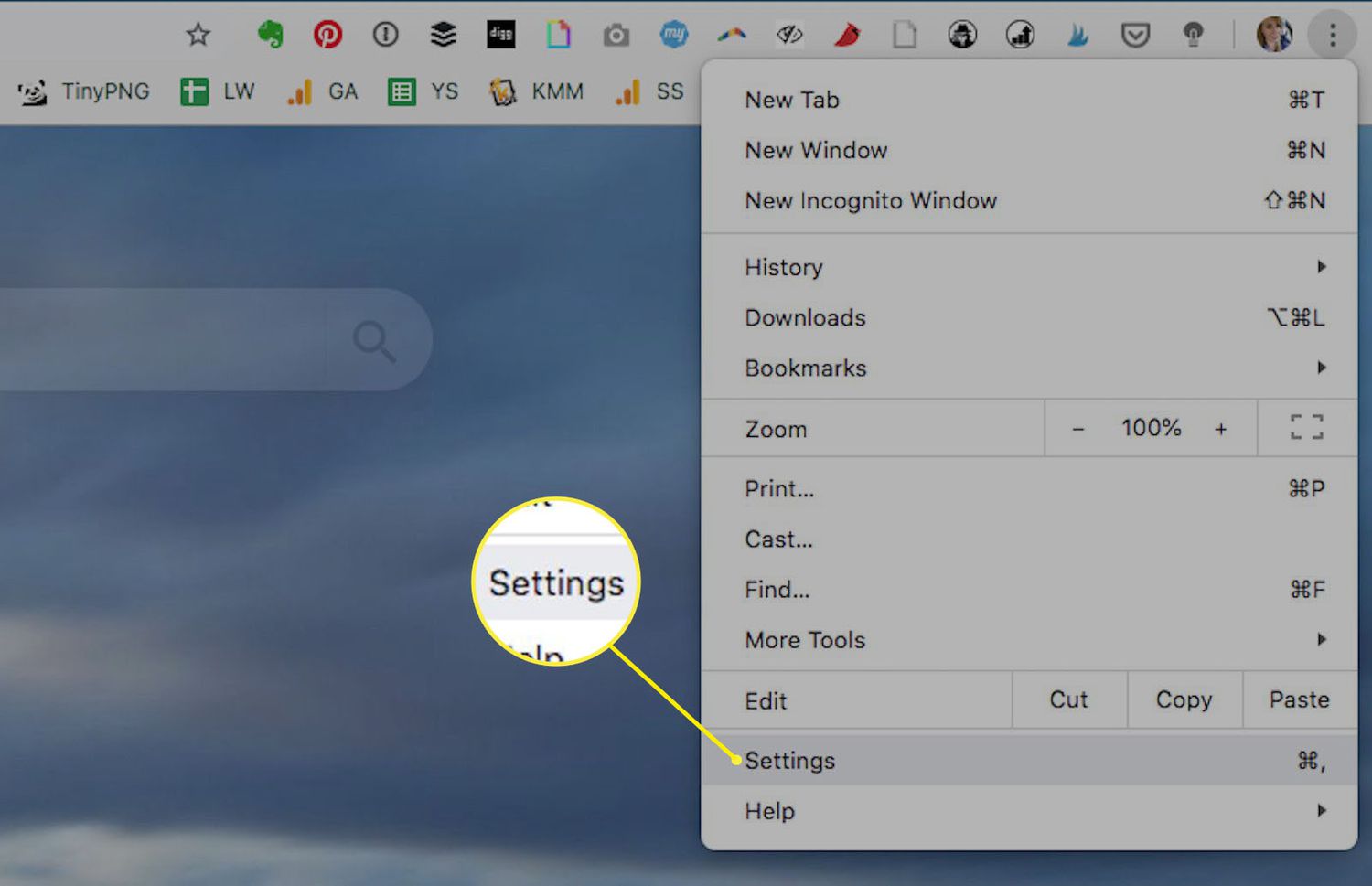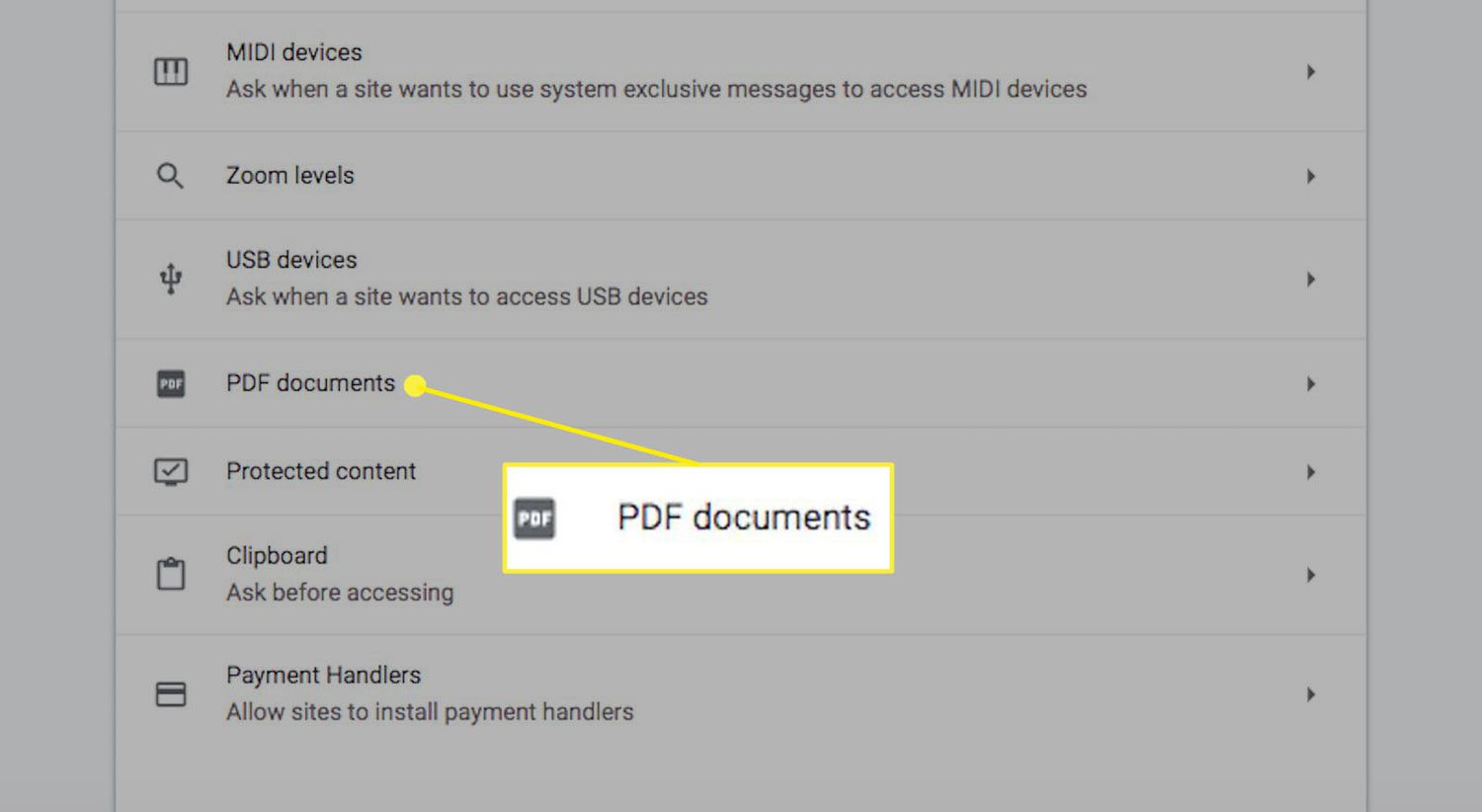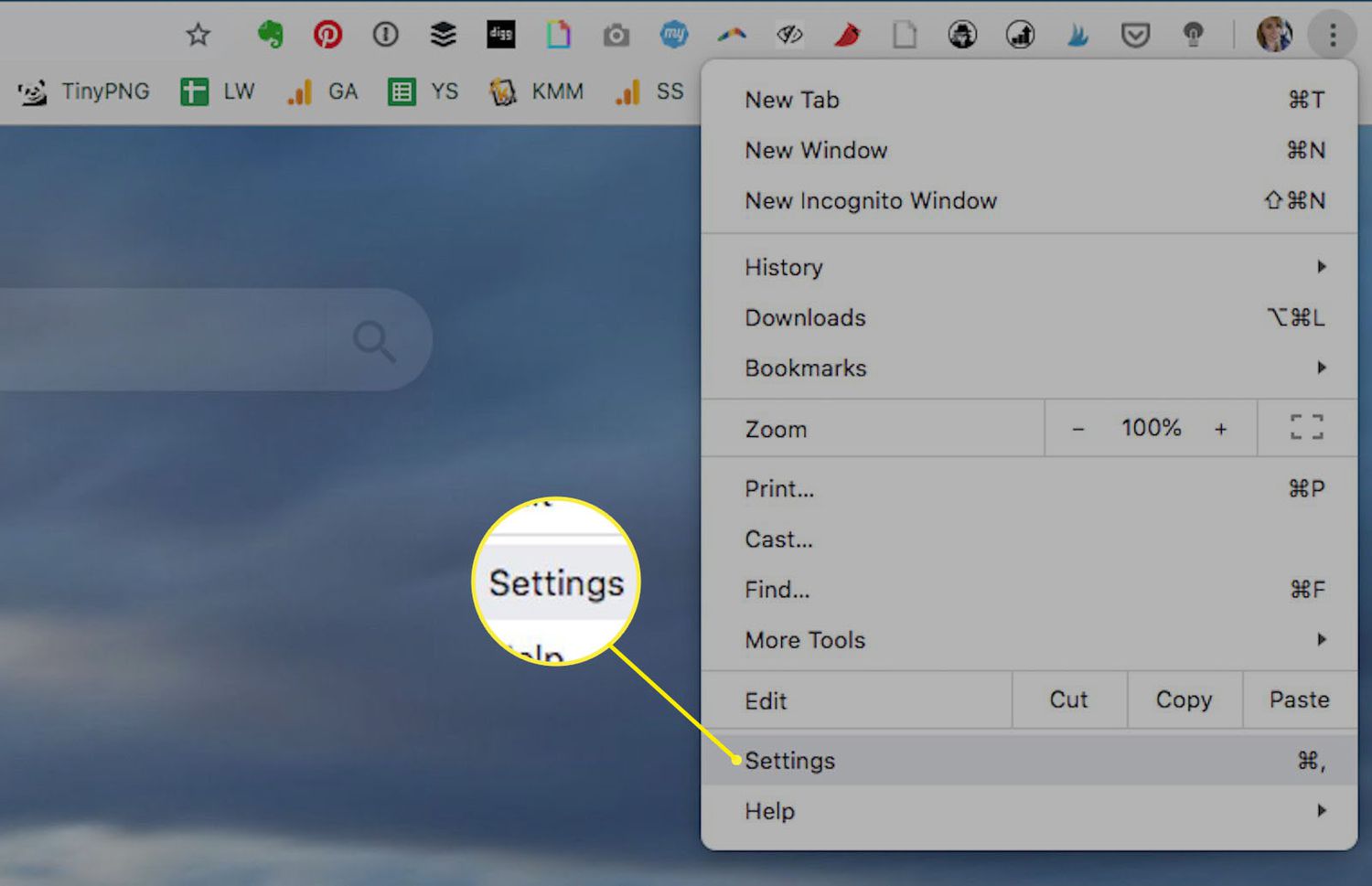Introduction
Annotating a PDF document can be an essential task for various purposes, such as highlighting important information, adding comments, or marking up a document for collaboration. With the widespread use of Google Chrome as a primary web browser, it's convenient to leverage its capabilities to annotate PDFs directly within the browser. This can streamline workflows and eliminate the need for additional software or tools.
In this article, we will explore the process of annotating a PDF on Chrome using a PDF annotation extension. By following a few simple steps, you can unlock the potential of Chrome as a versatile platform for managing and annotating PDF documents. Whether you're a student, professional, or simply someone who frequently works with PDFs, mastering the art of PDF annotation on Chrome can significantly enhance your productivity and document management efficiency.
By the end of this guide, you will have a clear understanding of how to seamlessly integrate PDF annotation into your Chrome browsing experience. Whether you're highlighting key points in a research paper, adding notes to a contract, or collaborating with colleagues on a project proposal, the ability to annotate PDFs directly within Chrome can be a game-changer.
So, let's embark on this journey to discover the power of PDF annotation on Chrome and unlock a new level of efficiency and convenience in managing your digital documents. Let's dive into the step-by-step process of installing a PDF annotation extension, opening a PDF in Chrome, utilizing annotation tools, and effectively saving and sharing the annotated PDFs. Get ready to elevate your PDF management skills and make the most of your browsing experience with Chrome!
Step 1: Install a PDF annotation extension
To begin the journey of annotating PDFs on Chrome, the first step is to equip your browser with a reliable PDF annotation extension. These extensions are specially designed to empower users with the ability to add annotations, highlights, comments, and other markups directly within PDF documents, without the need for external software or tools. The Chrome Web Store offers a diverse range of PDF annotation extensions, each catering to different user preferences and requirements.
-
Navigate to the Chrome Web Store: Open your Chrome browser and visit the Chrome Web Store by clicking on the Apps icon in the bookmarks bar or typing "chrome://apps/" in the address bar. Once you're in the Chrome Web Store, you can explore the wide array of extensions available for various purposes.
-
Search for PDF annotation extensions: In the search bar at the top left corner of the Chrome Web Store, enter keywords such as "PDF annotation," "PDF markup," or "PDF highlighter" to initiate a search for relevant extensions. This will populate a list of extensions designed to facilitate PDF annotation within the Chrome browser.
-
Select a suitable PDF annotation extension: Browse through the search results and carefully evaluate the features and user reviews of different PDF annotation extensions. Look for extensions that offer intuitive annotation tools, seamless integration with Chrome, and positive user feedback regarding performance and reliability.
-
Install the chosen extension: Once you've identified a PDF annotation extension that aligns with your requirements, click on the "Add to Chrome" button to initiate the installation process. Chrome will prompt you to confirm the installation, after which the extension will be seamlessly integrated into your browser.
-
Verify the installation: After the installation is complete, you can typically find the PDF annotation extension's icon in the Chrome toolbar or extensions menu. This indicates that the extension is successfully installed and ready to be utilized for annotating PDF documents.
By following these steps, you can effectively equip your Chrome browser with a PDF annotation extension, unlocking the capability to annotate PDFs with ease and efficiency directly within the browser environment. With the right PDF annotation extension at your disposal, you're poised to embark on a seamless and productive journey of annotating PDFs on Chrome, enhancing your document management capabilities and streamlining your workflow.
Step 2: Open the PDF in Chrome
Once you have successfully installed a PDF annotation extension in your Chrome browser, the next step is to open the PDF document that you intend to annotate. Chrome offers multiple methods for opening PDFs, providing users with flexibility and convenience in accessing and managing their digital documents. Whether the PDF is stored locally on your device or hosted on a website, Chrome's intuitive interface and seamless integration with PDF annotation extensions make the process of opening PDFs a straightforward endeavor.
Opening a Local PDF File
If the PDF document you wish to annotate is saved locally on your device, Chrome offers a simple and efficient method for accessing and opening it within the browser environment. Follow these steps to open a local PDF file in Chrome:
-
Navigate to the PDF File: Locate the PDF file on your computer or storage device using the file explorer or designated folder where the document is saved.
-
Drag and Drop: With Chrome open, simply drag the PDF file from its location and drop it into an open Chrome browser window. This action will automatically load the PDF within Chrome, allowing you to view and interact with the document directly in the browser tab.
-
Use the 'Open' Dialog: Alternatively, you can use the Chrome menu to navigate to 'File' and select 'Open File'. This will prompt a file explorer window where you can locate and select the desired PDF file for opening in Chrome.
Opening a PDF from the Web
In addition to local PDF files, Chrome provides seamless support for opening PDFs directly from the web. Whether you encounter a PDF link on a website or receive a PDF attachment in an email, Chrome streamlines the process of accessing and viewing these online documents.
-
Clicking PDF Links: When you encounter a hyperlink to a PDF document while browsing the web, clicking on the link will prompt Chrome to automatically open the PDF within the browser tab. This allows for immediate access to the PDF content without the need to download the file separately.
-
Opening PDF Attachments: If you receive an email with a PDF attachment, simply clicking on the attachment within your email client will trigger Chrome to open the PDF directly within the browser, enabling you to view and interact with the document seamlessly.
By leveraging these methods, you can effortlessly open PDF documents in Chrome, setting the stage for the next crucial step in the annotation process. With the PDF loaded within the browser, you are now ready to explore the diverse annotation tools offered by the PDF annotation extension, empowering you to add highlights, comments, and other markups to the document with ease and precision.
Step 3: Use the annotation tools
With the PDF document open in Chrome and the PDF annotation extension seamlessly integrated into the browser, you are now poised to explore the diverse array of annotation tools at your disposal. These tools are designed to empower users with the ability to add highlights, draw shapes, insert comments, and perform various markups directly within the PDF document, enhancing its readability and facilitating collaborative interactions. Let's delve into the comprehensive suite of annotation tools offered by PDF annotation extensions, unlocking a world of possibilities for customizing and enhancing your PDF documents.
-
Highlighting Text: One of the fundamental annotation tools is the ability to highlight text within the PDF document. This feature allows you to emphasize key passages, important information, or noteworthy sections of the document. By simply selecting the desired text and applying the highlight tool, you can instantly draw attention to specific content, making it stand out for easy reference and review.
-
Adding Comments: The capability to add comments directly within the PDF document enables seamless collaboration and communication. Whether you're reviewing a colleague's report, providing feedback on a draft, or engaging in a collaborative research endeavor, the comment tool allows you to insert contextual remarks, suggestions, or explanations at precise locations within the document, fostering effective communication and knowledge sharing.
-
Drawing Shapes and Lines: PDF annotation extensions often include tools for drawing shapes, lines, and arrows directly onto the PDF pages. This functionality is particularly useful for creating visual cues, diagrams, or annotations that require graphical elements. Whether it's circling a key data point, drawing attention to a specific area, or illustrating a concept, the drawing tools offer a versatile means of enhancing the visual representation of the document.
-
Underlining and Strikethrough: In addition to highlighting text, the ability to underline or strikethrough content provides further flexibility in marking up the PDF document. Underlining can be used to indicate emphasis or importance, while strikethrough can signify revisions, deletions, or alternative content. These tools contribute to a comprehensive approach to annotating and modifying the document's content.
-
Adding Stamps and Signatures: Some PDF annotation extensions offer the functionality to insert predefined stamps, custom images, or digital signatures into the PDF document. This feature is valuable for indicating approval, authenticity, or specific status within the document. Whether it's a "Confidential" stamp, a company logo, or a digital signature, these elements can enrich the document with additional context and verification.
By leveraging these annotation tools, you can tailor the PDF document to suit your specific requirements, whether it's for personal reference, collaborative editing, or professional communication. The seamless integration of these annotation features within Chrome empowers you to transform static PDFs into dynamic, interactive documents, fostering enhanced engagement and comprehension. As you explore and utilize the annotation tools, you'll discover the power of customization and communication within the realm of PDF annotation on Chrome.
Step 4: Save and share the annotated PDF
After meticulously annotating the PDF document using the versatile tools provided by the PDF annotation extension in Chrome, the next crucial step is to effectively save and share the annotated PDF. This ensures that your annotations are preserved, allowing for seamless access and collaboration. Chrome, in conjunction with the PDF annotation extension, offers intuitive methods for saving and sharing annotated PDFs, empowering users to efficiently manage and distribute their annotated documents.
Saving the Annotated PDF
Upon completing the annotation process, it's essential to save the annotated PDF to retain the added highlights, comments, and markups. The PDF annotation extension in Chrome typically provides straightforward options for saving the annotated document, ensuring that your annotations are preserved for future reference and sharing. The following steps outline the process of saving the annotated PDF:
-
Accessing the Save Option: After completing the annotations, locate the save option within the PDF annotation extension's interface or the Chrome browser toolbar. This option is usually represented by a disk icon or a designated "Save" button, providing a convenient means of preserving the annotated PDF.
-
Choosing the Save Location: Upon selecting the save option, you may be prompted to specify the desired location and filename for the annotated PDF. Chrome's seamless integration with the native file management system of your device allows for flexibility in choosing the save location, such as the local storage, cloud storage, or specific folders.
-
Confirming the Save Action: Once the save location and filename are determined, proceed to confirm the save action. The PDF annotation extension will efficiently process and save the annotated PDF, ensuring that your annotations are securely preserved within the document.
Sharing the Annotated PDF
In addition to saving the annotated PDF for personal reference, the capability to share the annotated document with collaborators, colleagues, or peers is a valuable aspect of the annotation process. Chrome facilitates the sharing of annotated PDFs through seamless integration with various communication and collaboration platforms. The following methods can be employed to share the annotated PDF:
-
Emailing the Annotated PDF: Chrome's integration with email services allows for effortless sharing of annotated PDFs as email attachments. By initiating the email composition process within your preferred email client, you can attach the annotated PDF and seamlessly share it with recipients, enabling collaborative review and feedback.
-
Uploading to Cloud Storage: Leveraging Chrome's integration with cloud storage services, you can upload the annotated PDF to cloud repositories such as Google Drive, Dropbox, or OneDrive. This enables secure sharing and access to the annotated document, fostering collaborative interactions and document management.
-
Utilizing Collaboration Platforms: Chrome's compatibility with collaboration platforms and document management systems allows for direct sharing of annotated PDFs within these environments. Whether it's a project management tool, a collaborative workspace, or a document sharing platform, Chrome's seamless integration facilitates efficient sharing and collaboration on annotated PDFs.
By effectively saving and sharing the annotated PDF, you ensure that your annotations are securely preserved and accessible to relevant stakeholders. Chrome's seamless integration with the PDF annotation extension streamlines the process, empowering you to manage and distribute annotated PDFs with ease and efficiency. Whether it's for academic collaboration, professional communication, or personal reference, the ability to save and share annotated PDFs within Chrome enhances the utility and impact of your annotated documents.
Conclusion
In conclusion, the ability to annotate PDFs directly within the Chrome browser using a PDF annotation extension represents a significant enhancement to document management and collaboration. By following the step-by-step process outlined in this guide, users can seamlessly integrate PDF annotation capabilities into their browsing experience, unlocking a new level of efficiency and convenience in managing digital documents.
The installation of a PDF annotation extension serves as the foundational step, empowering users to access a comprehensive suite of annotation tools seamlessly integrated within Chrome. This integration streamlines the process of opening PDF documents, whether they are stored locally or accessed from the web, setting the stage for a seamless annotation experience.
The diverse array of annotation tools offered by PDF annotation extensions enriches the PDF annotation process, allowing users to highlight text, add comments, draw shapes, and insert stamps and signatures with precision and flexibility. These tools cater to a wide range of annotation needs, whether for personal reference, collaborative editing, or professional communication, fostering enhanced engagement and comprehension within the PDF document.
Furthermore, the seamless methods for saving and sharing annotated PDFs within Chrome ensure that the annotations are securely preserved and accessible to relevant stakeholders. Whether it's for academic collaboration, professional communication, or personal reference, the ability to save and share annotated PDFs within Chrome enhances the utility and impact of annotated documents, fostering seamless collaboration and knowledge sharing.
By mastering the art of PDF annotation on Chrome, users can elevate their document management skills, streamline collaborative workflows, and unlock the full potential of their digital documents. The seamless integration of PDF annotation capabilities within Chrome empowers users to transform static PDFs into dynamic, interactive documents, fostering enhanced engagement and comprehension within the realm of PDF annotation.
In essence, the process of annotating PDFs on Chrome represents a paradigm shift in document management, offering a seamless and intuitive approach to adding value and context to digital documents. Whether for educational, professional, or personal purposes, the ability to annotate PDFs within Chrome opens up a world of possibilities for customization, collaboration, and efficient document management.

























